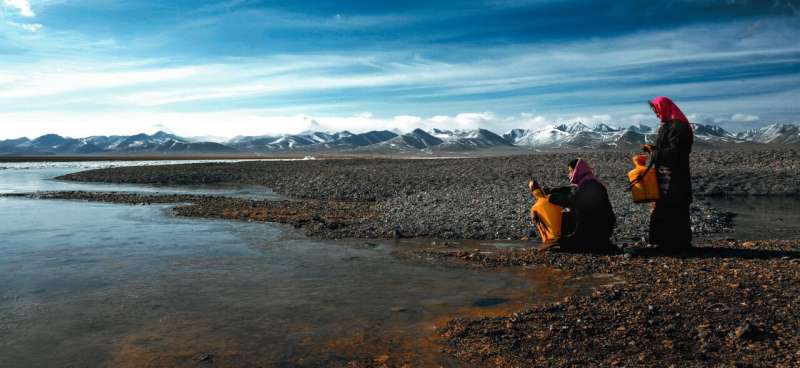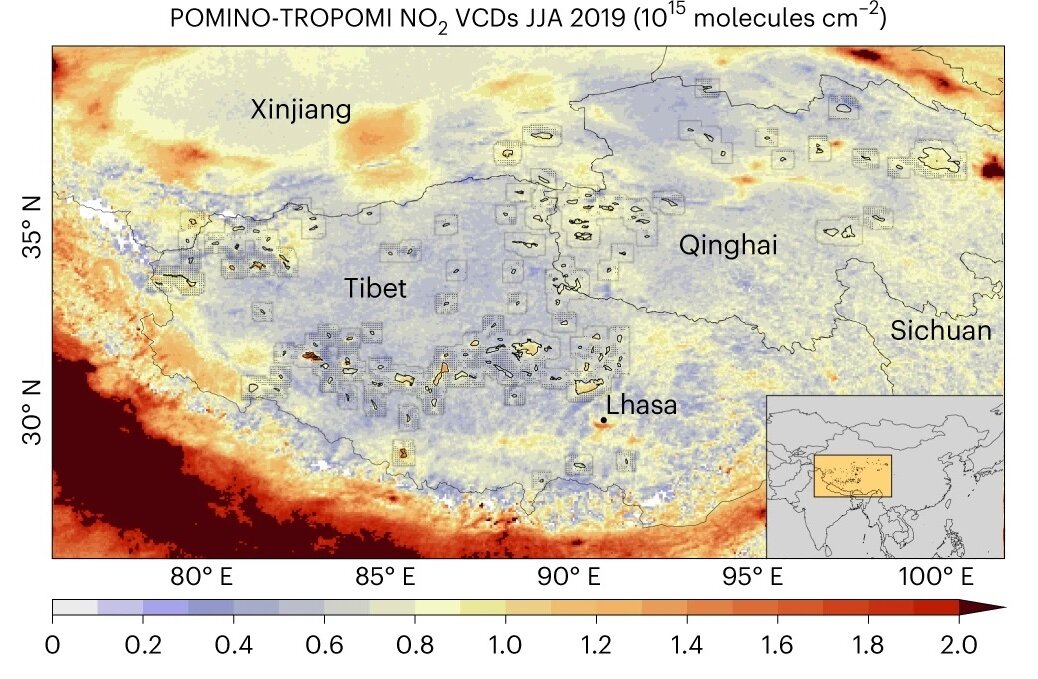Earth’s intricate systems interact within the atmosphere, land, water, ice, snow, and biological processes, forming a complex network of feedback loops. Understanding these relationships plays a crucial role in modeling the future impacts, particularly in relation to climate change.
Gases play a significant role in climate impact, with nitrous oxides considered the third most important greenhouse gas after carbon dioxide and methane. While nitric oxide is often associated with human activities like power plants and vehicles, it is also found in lakes.
Previously, nitric oxide in lakes was not considered a major factor in air quality or climate models compared to human sources. However, new research published in Nature Geoscience challenges this understanding by focusing on remote lakes on the Tibetan Plateau, where over 2 billion people across China, India, Pakistan, Nepal, Bhutan, Tajikistan, and Kyrgyzstan rely on them for valuable water resources.
The Tibetan Plateau contains thousands of lakes, making up approximately half of China’s lake environments. These lakes are typically located in isolated regions with no outflows, creating alkaline and saline environments.
A study conducted by researchers at the Laboratory for Climate and Ocean-Atmosphere Studies, Peking University, China, and their collaborators used satellite observations to record total nitric oxide emissions from 135 lakes larger than 50 km2. The study found that these remote lakes emit 1.9 metric tons of nitric oxide per hour, comparable to the emissions from global megacities such as Beijing, New York City, London, and Paris.
Interestingly, nitrogen dioxide levels in lakes on the south side of the Tibetan Plateau were 31.2% higher than their immediate surroundings within a 20 km radius. This highlights the significant impact of these remote lakes on the overall emissions and climate of the region.

The ten lakes with the highest nitric oxide emissions are located in regions experiencing rapid urbanization and population growth, exacerbating the warming trends on the Tibetan Plateau. In fact, Qinghai Lake alone emits as much nitric oxide as a 450 megawatt capacity coal-fired power plant.
The unusually high levels of nitric oxide from these lakes are attributed to a combination of microbial processes, along with warming and melting of glaciers and permafrost on the plateau. These processes convert nitric oxide into nitrogen dioxide in the atmosphere, specifically at the tropospheric level.
With lake warming accelerating each decade and the melting of ice and permafrost leading to the growth of lakes, the Tibetan Plateau faces significant challenges. Nitrogen dioxide measurements show that peak values are twice as high in summer compared to winter.
The anoxic environments within these lakes support the growth of specific bacteria that convert nitrogen into nitrites and subsequently into nitric oxide. The large quantities of nitric oxide produced contribute to ozone layer depletion, creating a positive feedback mechanism for climate change.
While the previous view considered nitrous oxide emissions from lakes to be relatively unimportant compared to anthropogenic sources, this research suggests otherwise. Future global warming models should include lake and inland water nitric oxide emissions to better understand the interconnectedness of Earth’s system and its effects on climate change.
More information: Hao Kong et al, High natural nitric oxide emissions from lakes on the Tibetan Plateau under rapid warming, Nature Geoscience (2023). DOI: 10.1038/s41561-023-01200-8
© 2023 Science X Network
Citation: Remote lake emissions from the Tibetan Plateau challenge global climate modeling (2023, June 26) retrieved 26 June 2023 from https://phys.org/news/2023-06-remote-lake-emissions-tibetan-plateau.html
This document is subject to copyright. Apart from any fair dealing for the purpose of private study or research, no part may be reproduced without written permission. The content is provided for information purposes only.



